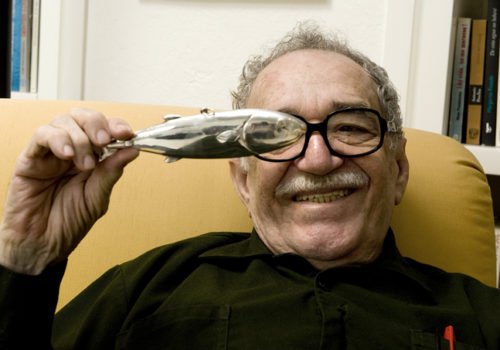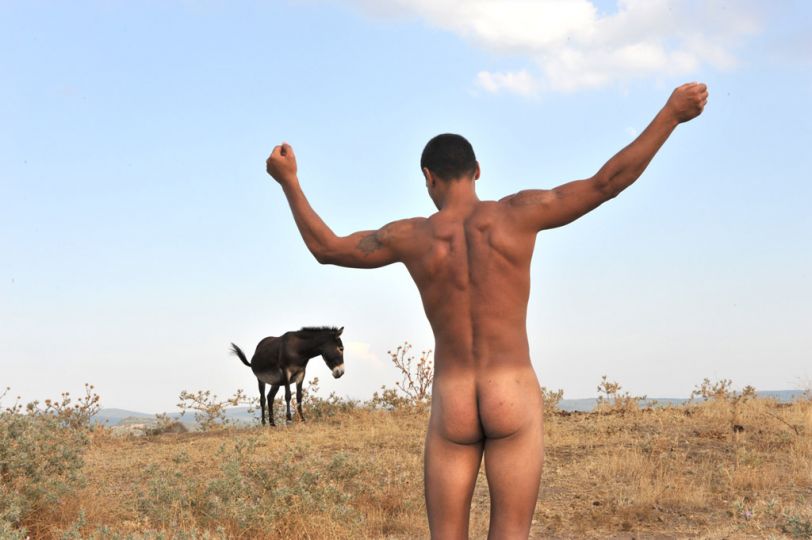This tender account of the various occasions on which the Greek painter and photographer Dimitris Yeros made likenesses of the great Colombian writer Gabriel Garcia Marquez, the inventor of the concept ‘Magical Realism’ in literature, brings to mind several thoughts.
I never met Garcia Marquez, but I do know the seaside city of Cartagena, mentioned here, and I have also been to Mexico City, where the author spent his final years. Cartagena is the setting for one of the finest of Gabo’s novels, Love in the Time of Cholera, and it is impossible to wander through its streets, looking at the old colonial buildings, without thinking of him.
What this sequence of photographic portraits evoke is another kind of magic , that of the photographic medium. In his afterword, Dimitris Yeros explains in his postface that a series of photographs of this kind, images of a genius, have, if they are at all successful, a surreptitious alchemy. They tell us not only what the great man looked like – what his presence was in the material world that both he and the photographer inhabited – but they also convey an aura.
Before photography was invented, the portraitists of the European tradition struggled to convey the essence of their subjects. We now have no objective correlatives that will enable us to measure what degree of success they had in doing this. Sometimes, especially in the case of great self-portraits, such as those which Rembrandt made in the concluding years of his life, we may feel that the image is indeed triumphantly ‘like’. But we can never been certain. Of the great writers of the pre-photographic era, very few convincing likenesses exist. By ‘convincing’, I mean images that make us feel that we have actually met the person concerned.
Photography has changed that – increasingly so as the technology has become more fluent. It can tell us, with remarkable exactitude, what a particular person looked like at a given moment – from childhood to old age. What is still needed however is the act of empathy that joins the photographer, the person holding the camera, to his subject. Many photographic portraits, as all of us know, are completely opaque. They show us something, but tell us nothing.
This book is fascinating because it shows us aspects of one of the greatest writers of our age. Each likeness is subtly different. Each is an avatar of a complex personality – complex enough to hide in plain sight. One might even go so far as to say that each is a loving betrayal.
I am quite sure that those who turn these pages will find themselves looking at them, not once, but repeatedly. The point about Magic Realism in literature is that it seeks to present not just outer reality, but the operation of some kind of inner realm, linked to reality but somehow transcending it.
That is what these portraits do here, thanks to the magic of the lens.
Edward Lucie-Smith
Edward Lucie-Smith is an English writer, poet, art critic, curator and broadcaster.
Dimitri Yeros: Photographing Gabriel García Márquez
Published by Kerber
$45

















